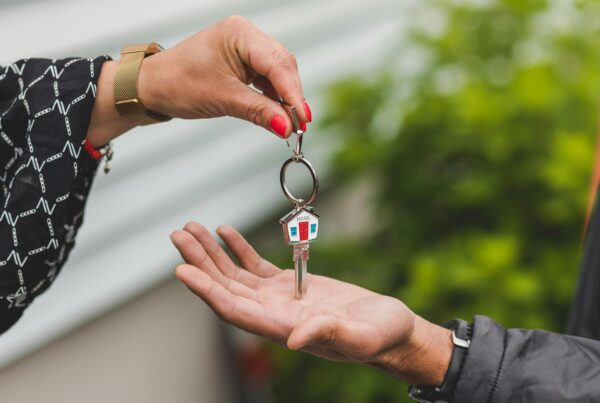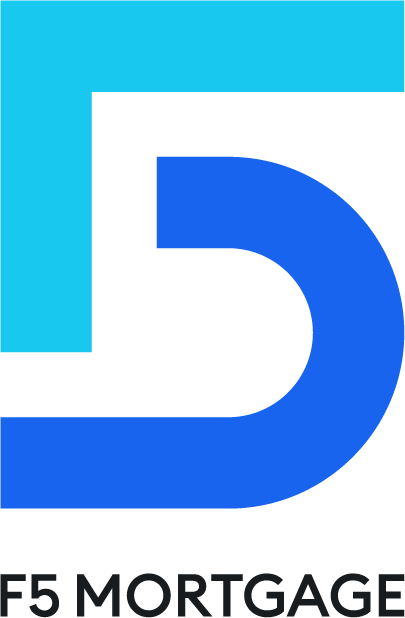Many Americans strive for a home, a major investment that allows them to lay down roots in the community where they want to live.
However, homes are very expensive, and many buyers have to save up for years just to afford the down payment. As a result, most homebuyers seek out mortgage options to afford their properties, borrowing money from a lender for the upfront cost and then paying it back over time.
Finding the right loan option is critical to achieving your goal of homeownership, and one of the loan programs that could help is the USDA loan initiative through the United States Department of Agriculture.
What are USDA Loans?
A USDA loan is a type of mortgage that can be used to purchase primary residences in certain areas. Unlike conventional loans, backed by the two largest home mortgage companies in the US, Fannie Mae and Freddie Mac, USDA loans are insured by the federal government.
USDA loans are designed only for specific types of homes, usually in rural or suburban areas. This financing solution helps lower-income borrowers move into rural homes when they might not otherwise be able to afford them.
Through its loan initiative, the USDA offers three mortgage types: a guaranteed loan, a direct loan, and a rural repair and rehabilitation loan. The program you apply for depends on your financial situation, the loan amount you require, and the home you invest in.
USDA Loan Qualification Requirements
Not everyone is eligible to receive a USDA loan for their home purchase, as you must meet several requirements:
- Location: The home must be in a rural or suburban area designated under USDA loan protocols.
- Credit Score: Generally, lenders require a minimum credit score between 620 and 640.
- Income Limits: The program is intended for low-to-moderate-income borrowers, so household income must fall within specified limits.
- Primary Residence: The property must be the borrower’s primary residence.
- Refinancing: If you already have a USDA loan, you may be able to refinance it into a new USDA mortgage.
Advantages of USDA Loans
USDA loans are ideal for the right type of borrower. They offer many advantages that make homeownership a much more achievable goal, but only if you meet the eligibility requirements.
Let’s look at some of the USDA loan benefits for prospective buyers.
-
No Down Payment
A down payment, money paid upfront to cover a portion of the property value, is required to obtain a conventional loan or even an FHA loan. Some lenders offer minimum down payment requirements as low as 3%, but others require 5%, 10%, or even 20% down payments. This requirement means that for a $150,000 home, the borrower would need to pay anywhere from $4,500 to $30,000 upfront. For many new homebuyers, this type of investment is not affordable.
However, a USDA loan does not require a deposit, so you can finance the entire value of the property with your loan. This advantage makes USDA home loans a great option for lower-income homebuyers.
USDA loans require an upfront guarantee fee in place of a down payment. As of 2024, this fee is 1% of the total loan amount. Borrowers are also expected to pay an additional fee of 0.35% of the loan amount each year. Still, the annual fee and upfront guarantee fee are significantly lower than the down payment requirements for conventional loans.
-
Competitive Interest Rates
Interest rates determine how much you pay back to your lender on top of the principal amount of your loan. The higher the interest rate, the more you will pay over the lifetime of the loan. USDA loans offer lower interest rates than conventional home loans, meaning borrowers will owe less money over time, making their monthly mortgage payments more affordable.
USDA interest rates vary based on various factors, including location, credit score, and loan amount. However, according to the USDA page for Single Family Housing Direct Home Loans, the standard interest rate for these loans in 2024 is 4.5%, with options for adjustment down to as low as 1%.
In 2024, interest rates on conventional home loans will be above 6%, making them less affordable for lower-income borrowers than USDA loans.
-
Flexible Credit Score Requirements
Your credit score reflects your ability to pay back debts. The higher your score, the more trustworthy you seem to potential lenders.
USDA loans have more flexible credit requirements than conventional loans. A minimum credit of 620-640 is usually enough to secure the mortgage. This lower threshold makes acquiring a USDA home loan accessible to a wider pool of borrowers.
-
Lower Mortgage Insurance Premiums
With conventional mortgages, borrowers who pay at least 20% for a down payment can waive private mortgage insurance. A USDA loan does not require down payments, so borrowers are typically required to purchase mortgage insurance. This insurance helps protect the lender if the loan cannot be paid off.
Though USDA mortgage loan recipients are expected to purchase mortgage insurance, the annual premium is very low. You will also pay an upfront guarantee fee as a mortgage insurance requirement, but even this will be much lower than a conventional or FHA mortgage would require. Your monthly mortgage insurance rate will also be lower with a USDA loan.
-
Potential for Seller-Paid Closing Costs
Closing costs are fees the homebuyer pays when signing the contract to complete the home purchase. These costs can amount to as much as 2-5% of the home’s total cost.
With a USDA home loan, however, buyers have the option to roll those closing costs into the loan amount. While this option raises your monthly mortgage payment, it also reduces your financial obligation at the time of your home purchase.
In some cases, the seller may be willing to pay for the closing costs, eliminating the buyer’s responsibility to pay. This reduces the upfront cost of a home even further for low-income borrowers.
If high closing costs are a barrier to homeownership, USDA loans offer diverse solutions to reduce purchase costs.
Disadvantages of USDA Loans
While USDA home loans offer a great financial option that incentivizes more people to invest in homes, they are not for everyone.
Here are the cons of USDA loans that you should consider before applying.
-
Income Restrictions
USDA home loans are designed for low-to-moderate-income homebuyers. That means there are strict income limits for eligibility. If your monthly income is too high, you won’t be approved for a USDA home loan.
Similarly, if your income is too low, lenders may consider you too risky as a borrower, which could impact your ability to get a USDA loan.
A common issue many people face when applying for loans is discovering they have a high debt-to-income ratio (DTI). Your DTI compares your monthly debts to your gross monthly income. If lenders determine your income is too low to account for your debts safely, your loan application may be denied.
-
Property Location Eligibility
Applying for a USDA home loan significantly restricts the type of home you can purchase. USDA borrowers can only buy homes in rural areas and certain suburban locations, which is not ideal for many aspiring homeowners.
As such, it is important to research whether the home you want is located in one of these zones. If not, you will not be able to use a USDA home loan to finance your home purchase.
-
Property Type Restrictions
When financing a home with a USDA loan, property-type restrictions also determine what type of home you can buy. For example, the house must meet specific conditions for safety, like having functional water, electrical, heating, and cooling systems.
The structure of the home, including the foundation, must also be deemed safe. Additionally, homes must be accessible from a paved or all-weather road to be eligible for USDA home loans.
-
Owner-Occupancy Requirement
To rightfully receive a USDA home loan, the borrower must use the property as a primary residence. You are not allowed to use the home you buy with a USDA loan as a vacation home or income property. Borrowers who attempt to purchase seasonal or income properties with USDA loans will almost certainly run into problems with their borrower (the government), as this would be considered mortgage fraud.
-
Longer Processing Times
USDA-approved lenders must work with the federal government, specifically the Department of Agriculture and Rural Development, to approve these government-backed loans. Consequently, a USDA loan can take longer to process than a conventional loan, as there is a more complex and thorough discovery phase to determine eligibility.
If you have limited income or a poor credit history, the lender may need even more time to look into your financial background. This longer wait time may also mean you will have to wait longer to close on your home and move in.
Is a USDA Loan Right for You?
With these loan limits in place, USDA-backed mortgages pose significant barriers to loan approval, making them a less-than-ideal option for certain borrowers. Here’s how to know if you qualify for a USDA loan:
- Household Income: Your income must fall within USDA limits for low- to moderate-income borrowers.
- Location: The property must be in a USDA-designated rural or suburban area.
- Urgency: USDA loans take longer to process due to thorough eligibility checks, so consider your timeline.
- Credit Score: Generally, a minimum credit score of 620 to 640 is preferred.
- Down Payment: USDA loans are excellent if you cannot afford a down payment.
A USDA loan may be ideal if you have limited income, fair credit, and plan to move to a rural area without urgent timing. However, if you need to move quickly, have a high debt-to-income ratio, or are moving to an urban area, a USDA loan may not be suitable.
Alternatives to USDA Loans
Finding the right housing loan options is the key to affording your new home. If a conventional mortgage doesn’t fit your needs, consider alternative financing methods. For those who do not qualify for USDA mortgages or seek better options, look into these other loan programs for borrowing solutions.
-
FHA Loans
FHA loans are backed by the Federal Housing Administration and allow lenders to lower some of their standards for approving loans. For example, FHA loans require a lower down payment than conventional mortgages. However, the down payment demands for an FHA loan is still higher than the zero-down payment requirement for USDA loans.
A distinct benefit of FHA loans compared to USDA loans is that they impose fewer location restrictions, meaning homebuyers are not necessarily limited to rural and suburban areas. FHA loans also benefit borrowers with fewer resources or a lower credit score, allowing them to own homes if they cannot get approved for conventional loans.
-
VA Loans
A VA loan is available to active-duty service members, veterans, and surviving spouses through the Department of Veterans Affairs. VA loans require no down payment and come with lower interest rates and no mortgage insurance premiums.
The amount you can apply for depends on your entitlement amount, which the VA determines. A VA funding fee must also be paid to help finance this program, though it can be rolled into the loan amount.
If you or your spouse have ever served in the military, a VA loan is a great home finance option, providing more benefits than a conventional loan.
How to Apply for a USDA Loan?
Since the process for USDA loan approval can take a while, it is best to get started as soon as you have an interest in a specific home that meets the criteria. Pre-approval can give you an advantage over other buyers who may not have gone through this process.
Here are the steps you can follow to apply for the USDA home loan program.
-
Contact a USDA-Approved Lender
Lenders must be approved by the federal government to offer USDA home loans. F5 Mortgage is an experienced lender who can help you finance your home with a USDA loan. Get in touch with the team to start the application process, or get a free quote.
The sooner you apply for a loan, the easier it will be to get pre-approved and have some leverage over other buyers who may not be able to act as quickly when negotiating with sellers.
-
Eligibility Documentation
A lot of documentation will be required throughout the application process to verify that you qualify for a USDA loan. You can check this list for what determines USDA loan applicant eligibility.
Some of the paperwork you may need to qualify for USDA direct loans or guaranteed loans includes legal identification, employment verification, bank statements, and pay stubs.
-
Property Appraisal
Before you get approved for the loan amount, the property you are buying will need to be professionally appraised. With USDA loans, the appraised value cannot be less than the selling price. If that is the case, negotiating for a lower purchase price with the seller may be necessary.
The appraisal must reveal that utilities are in working order, road access to the property is present, and no income-producing buildings are on the property. Despite being funded by the USDA, this housing loan program does not provide options for purchasing working farms or properties designed to function as businesses.
Summary
A USDA loan is a pathway to homeownership for many Americans seeking homes in rural areas. If you meet the USDA income limits, then you can enjoy benefits like no down payment, low interest rates, and low mortgage insurance premiums. F5 Mortgage is an approved USDA lender that can get you started on your USDA mortgage application quickly, moving you one step closer to owning your next home.
Contact our team for a free quote whether you are buying a home or refinancing to a new USDA mortgage. You can also give us a call at 888-459-0483 to get started.
“USDA Loans: Pros and Cons” FAQs
What are the income limits for USDA loans?
The income limit to qualify for a USDA loan varies from county to county and state to state and is based on the number of people in your household. In general, coastal states tend to have higher income limits to qualify for a USDA mortgage, while states in the center of the country have lower limits. Consult the USDA income limit map to find your specific county and associated income limits.
How do I know if a property is in a USDA-eligible area?
Check out the USDA eligibility area map to clarify if your home or home-to-be is in an eligible zone. Many rural areas, which are defined as “open country and settlements with fewer than 2,000 housing units and 5,000 residents,” are eligible, but not across the board. Some suburban areas fall within the USDA eligibility zone.
Do I have to be a first-time homebuyer to qualify for a USDA loan?
The USDA loan program is not exclusive to first-time homebuyers, though this group is typically the main beneficiary. However, you can still get a USDA loan if you have already owned a home in the past. There may be some restrictions on how much money you can qualify for if you have owned a home in the past three years, so do some research ahead to learn more about the requirements for previous homeowners.
Can I get a USDA loan with bad credit?
Lower credit scores do not automatically disqualify you from USDA mortgages. However, USDA lenders will need to review your credit history in depth if you have a low credit score. This means the process for approval could take longer since the lender will need to determine if you can reliably make your debt payments.
Sometimes a low credit score is simply a reflection of a short credit history, so you could still get approval if you reliably pay back your current debts.








